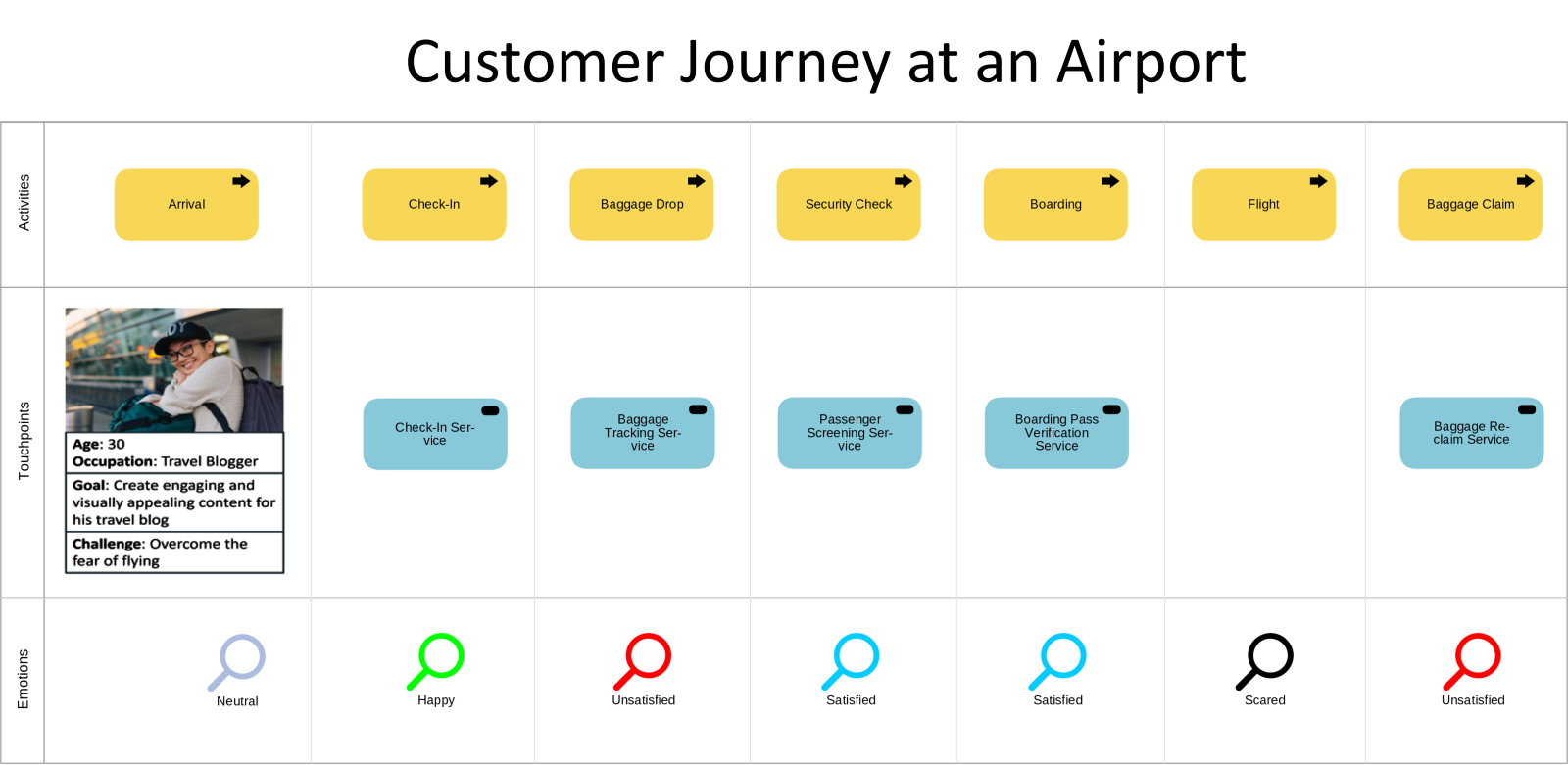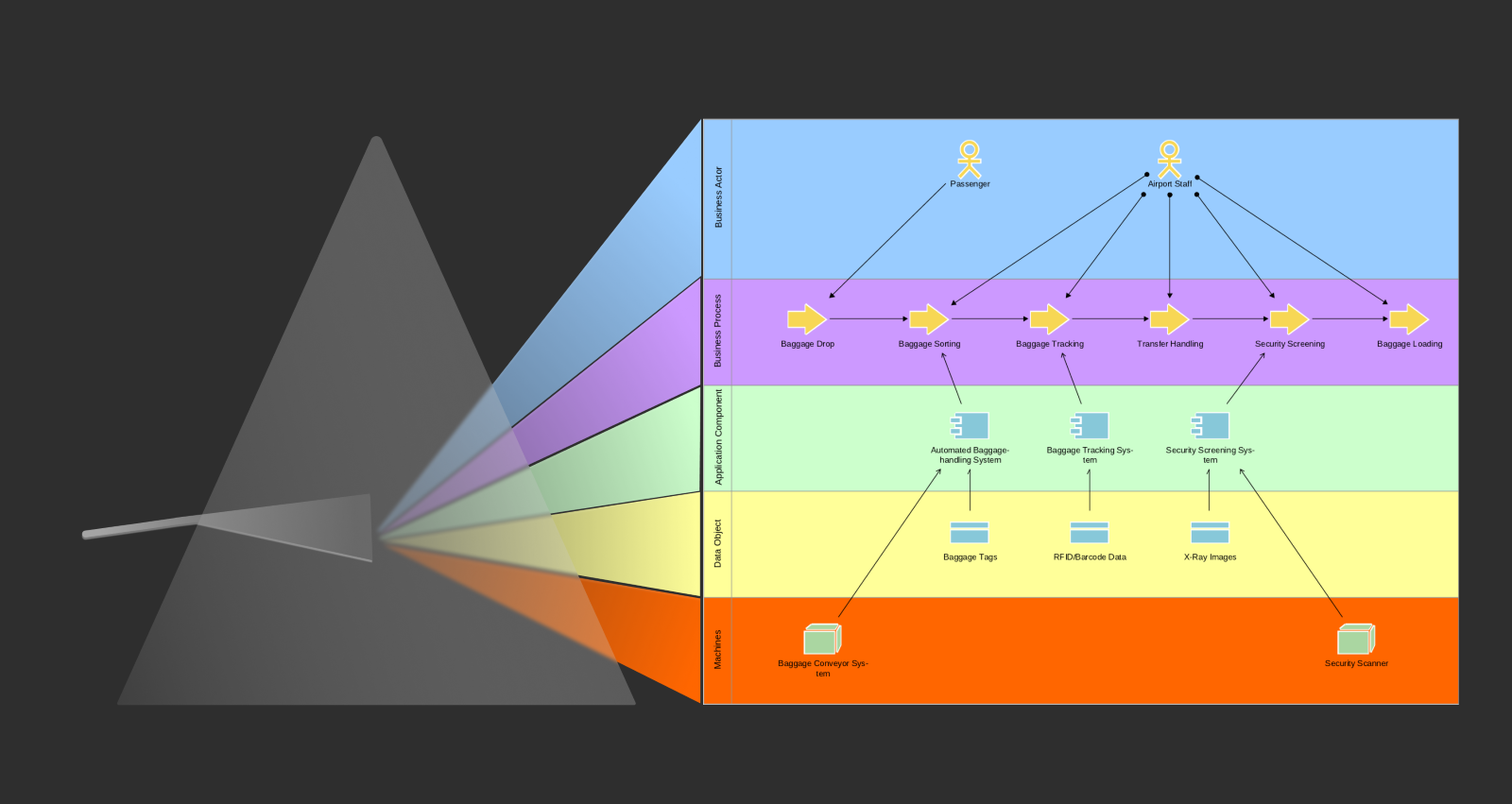Introduction
In a relentless pursuit of outstanding customer experiences, it’s easy to focus solely on the aspects visible to the customer. Yet, much like the hidden depths of Pink Floyd’s legendary album “The Dark Side of the Moon”, the customer journey (CJ) extends far beyond what meets the eye. It encompasses a multitude of essential processes, data, and applications. These are the touchpoints that shape every customer interaction. In our previous blog, we explored the essentials of Customer Journeys, and now it’s time to shed light on the intricate web of systems that support them. This is where Enterprise Architects come into play, orchestrating these unseen elements to ensure everything runs smoothly behind the scenes.
Join us as we venture into our “Dark Side of the Moon”, exploring how EA can illuminate the path towards enhancing the customer experience. In this exploration, we’ll focus on a specific industry example to demonstrate how optimizing backend operations can significantly enhance the customer journey. By examining the various passenger activities involved in air travel, we’ll unveil how airports can strategically improve every stage of the journey, ultimately leading to a smoother and more satisfying experience for travellers. Ready to explore? Let’s dive in!

Unseen frameworks shaping customer interactions
Exploring Hidden Dynamics of Air Travel
While passengers embark on their journey – navigating through terminals, boarding gates, and baggage claim carousels, a complex web of operations unfolds discreetly behind the scenes. From baggage handling to security protocols, numerous tasks lay the groundwork for a smooth customer journey. Let’s go through each key stage of air travel and unveil which aspects remain unnoticed by the customers, but make it all work.
- Arrival at the Airport:
Passengers step into the terminal remaining unaware of the meticulous planning and coordination required for their smooth transition.
- Check-In:
Whether engaging with airline personnel or using self-service stations, passengers embark on their journey, oblivious to the backend applications and software systems that seamlessly orchestrate the process.
- Baggage Drop:
Behind the scenes, baggage handlers sort, screen, load and transport luggage to designated areas, optimizing space and minimizing delays.
- Security Check:
As passengers undergo screening, cutting-edge technologies and procedural frameworks ensure the safety and efficiency of the process.
- Departure Lounge/Area:
Within the departure lounge, strategic layout designs and amenities cater for passengers’ comfort and convenience.
- Boarding:
Boarding procedures, carefully coordinated by ground staff, ensure a smooth and organized process for passengers to board the aircraft.
- On-board:
While passengers settle into their seats, maintenance crews and pilots execute pre-flight checks, ensuring a safe departure.
- Flight:
Behind the cockpit doors, a synchronized network of systems and personnel navigates the aircraft toward its destination.
- Arrival:
On touchdown, the ground crew springs into action, preparing for the swift disembarkation of passengers and baggage.
- Baggage Claim:
In the labyrinth of baggage claims, automated systems and manual interventions converge to reunite travellers with their belongings.
- Exit:
As passengers emerge into the arrivals hall, transport networks seamlessly usher them toward their next destination.
Example of an airport’s customer journey
From the moment travellers book their tickets to the retrieval of their luggage, every stage of air travel involves a hidden layer of operations. Each of these activities offers room for improvement. But, to optimize them, one needs to first discover every single activity, supporting application, data and software that goes on to get to the final stage. In the rest of the blog, we will take Baggage Drop-Off as an example of a complex process that contains several sub-parts that can (and must) be optimized to ensure a smooth experience for the customer.
Unleashing Potential: Baggage Drop-Off Experience
In the intricate dance of airport operations, travellers overlook numerous pivotal processes that shape their experience. Once such discreet activity is the baggage drop-off, marking the separation of travellers from their belongings – unveiling an untapped realm of potential optimization.
At the core of the Baggage Drop-Off process lies Baggage Sorting, a complex system of conveyor belts and sorting mechanisms dictating the trajectory of each suitcase. Here, Enterprise Architects (EAs) assume the role of efficiency architects, armed with tools and methodologies to dissect and refine these concealed operations. They leverage process modelling and simulation tools to ensure seamless workflows, fine-tune sorting algorithms and mitigate bottlenecks.
Next in line is Baggage Tracking – the invisible thread linking passengers and luggage. This part of the baggage handling presents a prime opportunity for improvement. While travellers hold onto their baggage claim tags, EAs can deploy real-time monitoring solutions, granting passengers unprecedented visibility into their belongings’ whereabouts. By integrating tracking data across airline and airport systems, EAs facilitate proactive interventions, averting potential mishaps and enhancing customer peace of mind.
Transfer Handling, a hidden process of moving the baggage, presents yet another frontier for optimization. As passengers navigate connecting flights, their luggage embarks on a covert journey, transitioning seamlessly between terminals and aircraft. Here, EAs craft interconnected systems to streamline transfer protocols, reduce transfer times and minimize the likelihood of misrouted baggage.
Furthermore, Security Screening and Baggage Loading, integral to airport security protocols, represent critical components of the airport machinery. While passengers may catch glimpses of their belongings passing through X-ray machines, the intricacies of screening and loading operations remain concealed. Through careful analysis and optimization, EAs refine screening procedures, striking a balance between security imperatives and operational efficiency. Similarly, by orchestrating tarmac logistics and optimizing loading sequences, EAs ensure the timely embarkation of luggage, mitigating delays and enhancing flight punctuality.
In essence, the hidden processes involved in Baggage Drop-Off offer a wealth of untapped potential awaiting the discerning eye of the Enterprise Architect. By peeling back the layers of secrecy and harnessing the power of data-driven insights, EAs illuminate the path toward a frictionless passenger experience, where every journey commences and concludes with seamless efficiency.
The Dark Side of the Moon” – the backend of the touchpoint that needs to be improved
Summary
Beyond the surface, the customer experience involves numerous concealed processes. Enterprise Architects (EAs) are pivotal in optimizing these operations, ensuring efficiency, and boosting customer satisfaction. As we navigate the evolving realm of customer service, acknowledging these hidden elements is crucial, akin to exploring the hidden depths of a timeless album. By uncovering inefficiencies and implementing tailored improvements, EAs pave the way for a smoother, more seamless customer journey.
Explore our blog on Experience Design for insights on how, when combined with EA, it creates a synergy for delivering exceptional user-centric solutions.





